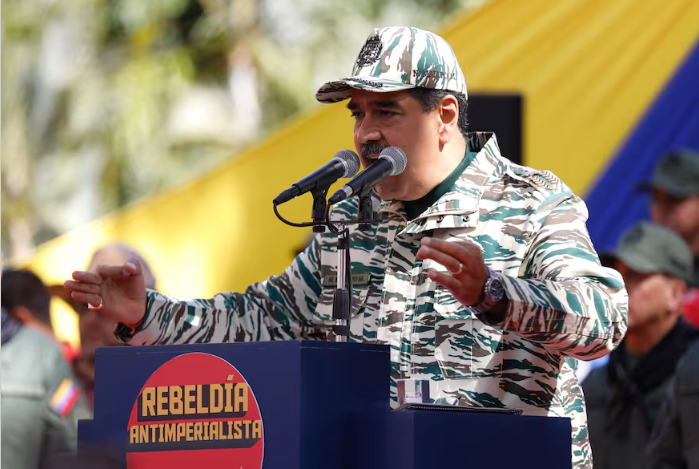The first Puerto Rican satellite, PR-CuNaR2, was successfully launched into orbit this morning from the International Space Station (ISS). The historic event was closely followed by a team of students from the Bayamón campus of the Inter American University of Puerto Rico and Professor Amilcar Rincon, who created the artifact and celebrated the exciting moment with applause and congratulations.
The satellite was put into orbit around 8:30 a.m., according to the transmission from the International Space Station that can be seen on the laboratory screens of the College of Engineering on the Inter Bayamon campus. From that moment on, Professor Rincon explained, PR-CuNaR2 will orbit the Earth, and if everything continues to go smoothly as it was, by Friday it will start sending the first signals.
“Hopefully this is the example that Puerto Rico has talent and we have the ability to develop whatever we plan to do. We are a country that, despite its small size, has a lot of talent and a lot of desire to do things. I invite all the young Puerto Ricans to continue studying, Above all, the jobs that lead us to be a technological nation. Let’s keep dreaming! “He who does not dream never gets anywhere,” said Dr. Rincon enthusiastically.
The satellite will act as a “floating laboratory”, taking advantage of conditions in space, to conduct experiments on “particles of different sizes and different substances” present inside, and thus be able to investigate theories about the formation of planets, asteroids and young stars, until eventually life runs out and burns up when entering the Earth’s atmosphere.
Once launched into orbit, the professor explained, the satellite will start operating its instruments after about 30 minutes, so that it can conduct its experiments. In parallel, the control system aligns it so that its antenna is “facing the Earth”, and therefore it can transmit and receive signals. Then they start sending signals from a station in Texas, and there they will get “10 minute packets, in this case it will be a video, then we compress it and then create the full video for future analysis” and subsequent publication in various media.
Rincon commented that the project began in 2014, in various stages, that included atmospheric balloons and other satellite models, until it became possible to realize a proposal approved by NASA, after competing with other proposals that also wanted the space agency to cover the cost and transportation needed to put the satellite in The space.
“There are millions of cost to put something in space. And one of the requirements for NASA, in order to be approved for this proposal, is that you have to show that you have a proven track record, that you have the necessary experience to put something in space. There are many universities that ask for admission , but if you don’t have the ‘background’, that background we’ve been working on for 10 years, they won’t be able to,” Rincon said.
The Inter team’s achievement had important repercussions for this university and others on the island, and as the professor explained, they are already working on another satellite project that, if they can take it to space, will still be inside the International Space Station. There are also other projects in the pipeline, “Because we’ve already received it, other universities in the United States want us to help them build another satellite. It has also prompted other university professors, from the University of Puerto Rico and private universities, to collaborate as well at this point, because this is an educational project “.
He stated that there are universities interested in cooperation in New York, Michigan and the University of Central Florida “and one in Turkey has asked us to be a visiting professor to help him so that this university and others in Turkey can take off in the aerospace region. We have reached the level of Central America, South America, Argentina and Colombia. I have put Puerto Rico is on the map in developing technology like this.”
For his part, Jesús Marrero Colón, a computer engineering student and co-projector as a software and computer pioneer, commented that the launch of the satellite “is fantastic, it is a catalyst. It’s a set of goals and it motivates us to keep drawing more and more.”
He added that in addition to the field of computer engineering, electrical and mechanical engineering students were also involved in the preparation of PR-CuNaR2. In total, about 25 students took part, although if the previous stages were counted, there were about 65 participants.
PR-CuNaR2 was launched into space on a Falcon 9 Dragon Capsule rocket from Cape Canaveral, Florida, as part of SpaceX’s Mission 23. The next day, the Dragon capsule re-entered at 10:40 a.m. on the International Space Station, where the Puerto Rican satellite was until morning Today.
The PR-CuNaR2 weighs 5.6 pounds and is four inches wide, four inches long and 12 inches tall. Development began three years ago as part of NASA’s ElaNa 37 project. During its development, about 25 students from various engineering programs at Inter-American University in Bayamon participated. However, the first prototype of this small satellite was built in 2013. From the creation of the first prototype until the completion of its construction and development, approximately 65 students, both women and men, were part of this project. The satellite is made of aluminum, photovoltaic cells, batteries and other materials that have been approved for use in space.
The satellite is ready to orbit for two years, but it can stay in space for much longer. By incorporating photovoltaic cells, the satellite charges its batteries, which provide it with the energy needed to operate. Since PR-CuNaR2 does not contain propellants, it will be drawn into the atmosphere and disintegrate without forming space debris.
As part of the entities that have collaborated in the effort to develop this project are NASA’s Puerto Rico Space Grant Consortium, University of Central Florida, University of Michigan, Florida Space Institute, Aerospace Corp, local companies Engiworks and Precision Experts.

“Proud web fanatic. Subtly charming twitter geek. Reader. Internet trailblazer. Music buff.”

:quality(85)/cloudfront-us-east-1.images.arcpublishing.com/infobae/4W5GDCEPT5FB3ARZDO4HFDJ2VI.jpg)
:quality(85)/cloudfront-us-east-1.images.arcpublishing.com/infobae/A2ZM6RKZJDCXL3UTUUER5RSRW4.jpg)

:format(jpeg):focal(1664x1618:1674x1608)/cloudfront-us-east-1.images.arcpublishing.com/gfrmedia/7UTQZAE7EJHJ7FMY2ZKTXB4RR4.jpg)


More Stories
Retro Nintendo games are coming to iPhone: how to install them
How to find out a person's location just by searching for his cell phone number
NASA has regained contact with Voyager 1, the spacecraft farthest from Earth